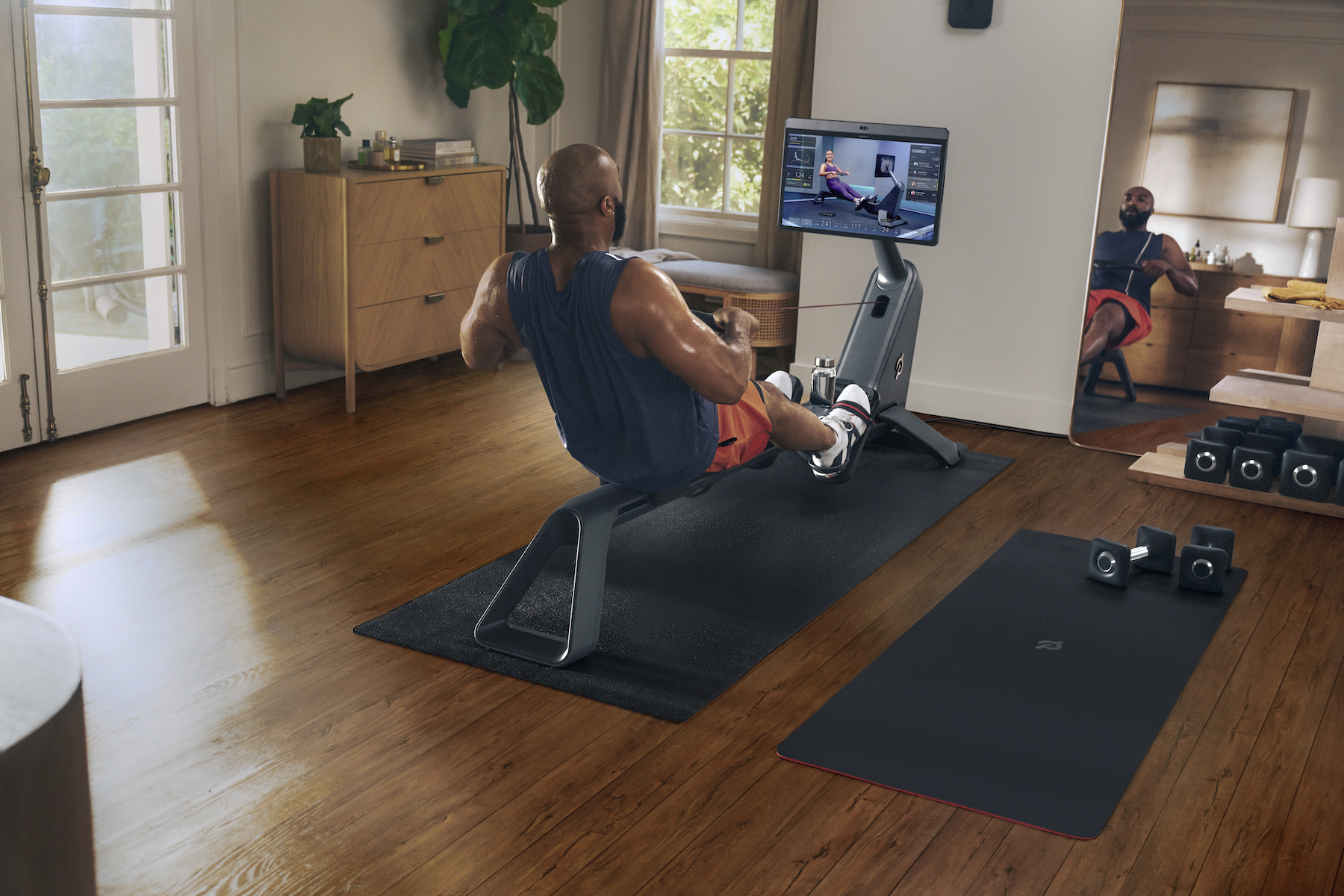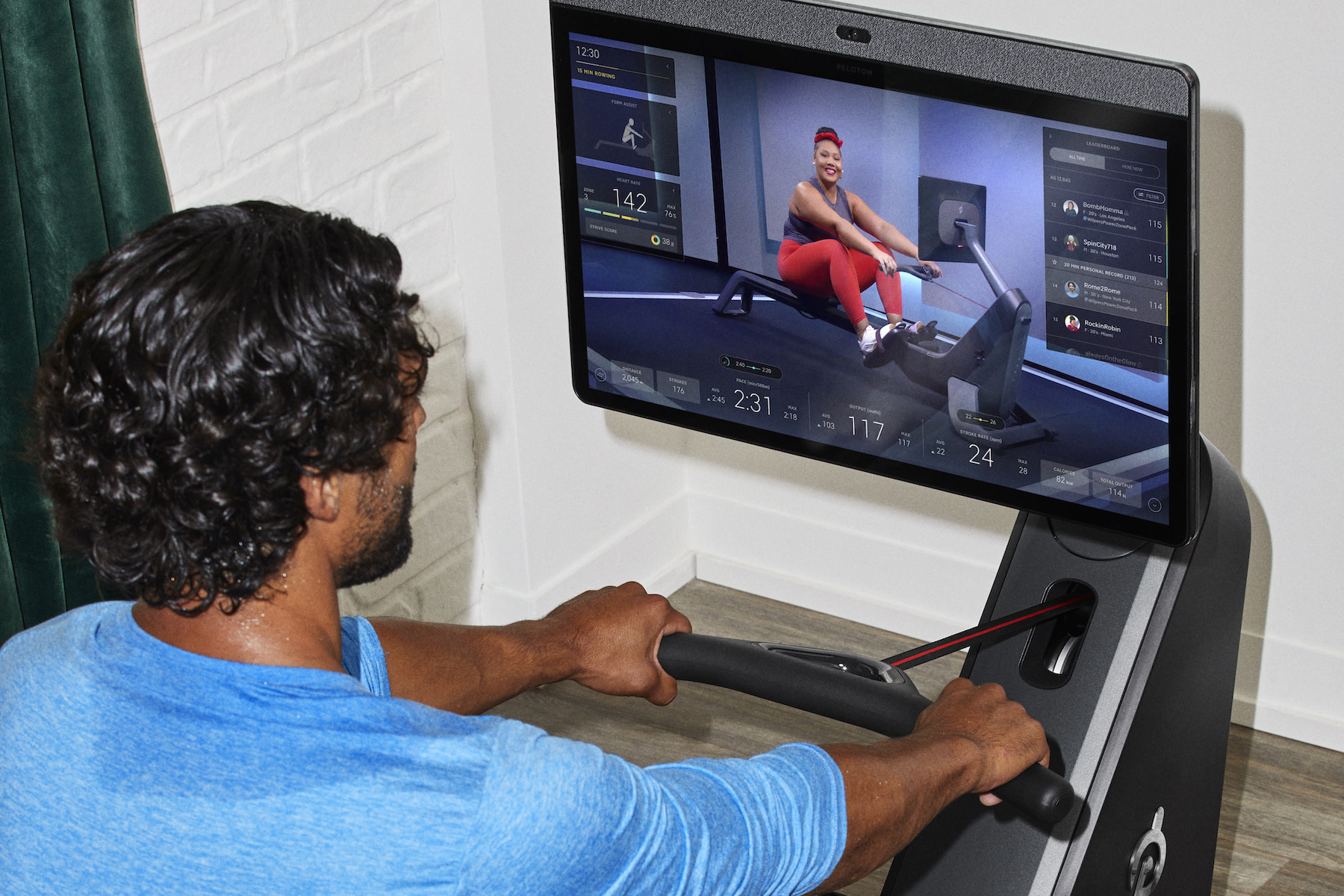
6 Things Peloton Instructors Want You to Know About Rowing
Contrary to what you might think, everyone can row.
By Lauren Mazzo•
Start Small
Be Patient
Work on One Form Cue Per Workout
Find Power In Your Legs
Be Consistent
Remember: Rowing Is for Everyone
Rowers are truly the unsung hero of cardio equipment. The catch? Hopping on the Peloton Row is not always quite as simple as hopping on a Peloton Bike and pedaling or stepping onto a Peloton Tread+ to walk or run. And while you don't have to be a professional rower to try rowing, rowing does require a bit more skill to get started and as such, there’s a bit of a learning curve to get it right—but when you do, it pays off.
Rowing can engage 86 percent of the muscles in your body in 15 minutes, simultaneously strengthening all those muscles while getting your heart rate up, serving as a cardio workout, too. Rowing is also low-impact, which makes it a great option for anyone beginning or returning to exercise, those recovering from injury, or people who want to give their joints a little extra TLC. It also makes a fantastic cross-training option for anyone who loves to run or cycle; both modalities are very focused on the front of the body, whereas rowing works more of your posterior chain, aka the back of your body. Mixing some rowing into your workout schedule can help target opposing muscles so you build more balanced strength.
Down to give rowing a try? Peloton’s rowing instructors have all the beginner rowing tips you need to get started.
Start Small
You wouldn’t go for a run for the first time with the expectation of logging a half marathon—similarly, you shouldn’t aim to tackle 10,000 meters during your first rowing workout. You’ll probably be surprised to find out that, as a beginner, rowing for even 10 minutes straight can be a tall ask.
“I find that because rowing demands a lot out of you, there's a kind of scariness to it,” says Peloton instructor Alex Karwoski. That’s a good thing; it means you’re challenging yourself. But it also means you need to check your ego at the door and embrace what it means to be a beginner at rowing. Alex recommends “getting there in steps—not sitting down and going, ‘I'm going to [row for] 30 minutes’” just because you can easily sit down and bike for 30 minutes.
A good place to start? Any of the 10-minute Form & Drills rowing classes in the Peloton App. They’ll help you hone your form and provide just the right dose of rowing to build your endurance.
Be Patient
As Alex said, rowing is humbling. For that reason, a big part of learning the sport is starting slowly and being patient with yourself—something all of the Peloton instructors here echoed, especially instructor Ash Pryor.
“I wish that people understood the patience it requires. You're not going to automatically be good at it—because how many times have you had both your feet and your hands strapped into something, you're seated, and you're just moving in one direction the entire time?” she says. “Have patience. It really takes a moment for it to click, and when it does, it is so fulfilling… Keep working at it for the ‘aha’ moment.”
Peloton instructor Katie Wang seconds that. “It takes time. You’re not just going to get it right away, and that’s OK,” she says. Instead of feeling limited, try to enjoy the journey of learning something new. “There is something so rewarding about mastering and tackling a new way to move your body,” she says.

Work on One Form Cue Per Workout
Mastering proper rowing form can be tricky since there’s a lot to think about. “Because it involves your whole body, there are so many things, mechanically, that people have to think about while they’re rowing,” says instructor Adrian Williams. “So I think when people initially get on the Row that’s all they can do—think about each part: legs, body, arms; arms, body, legs.”
That can easily become overwhelming. To help, Ash recommends picking one form cue to think about during each rowing session. For example, “this one class or this one practice, I'm only focusing on making sure I don't shrug my shoulders,” she says. During her next workout, she might focus on her hip hinge. The key is “being able to break it down in increments to build to the whole shebang coming together,” she says.
The Form Assist feature on the Peloton Row can really help you here. “It’s kind of like a cheat code when it comes to rowing because you can see in real time what your body is doing,” Adrian says.
Find Power In Your Legs
A big misconception about rowing? That it’s an upper-body workout. “It is not an upper-body workout; it's a total-body workout, and a majority of the power comes from the legs,” Ash says.
Katie agrees that this is the number one thing that confuses people about rowing. “The sooner you can tailor your mind-muscle connection to generate your power more from the lower body, the sooner you unlock all that rowing has to offer,” she adds.
To help tap into your lower body power, Katie recommends focusing on the catch phase (when your arms are straight, your legs are bent, and the sliding seat is as close to the flywheel as it gets during your stroke). Make sure you’re getting full compression in that position, Katie says. You want your shins to be vertical, perpendicular to the floor. Think of it like squat jumps, she says. “You’re doing the same movement essentially [on the rower] except you are doing it horizontally instead of vertically.”
Be Consistent
To become more comfortable with rowing, Adrian’s number one tip is simple: row more.
“One piece of advice that I give everyone is that it’s meant to be repeated as much as possible,” he says. Eventually, rowing can become habitual, where you won’t need to think about every little cue as you do it. “That’s when your body can develop and grow from the rowing itself,” Adrian says. But how do you get there? “Consistency,” he says. Try to put in time on the rower two or three times a week, even if they’re just for five- or 10-minute sessions to start.
And it may sound counterintuitive, but relaxing into the movement can also help you find your flow. “The ‘aha’ moment comes when you just exist, when you just move, when you just build it in small increments,” Ash says.
Remember: Rowing Is for Everyone
Don’t let all this talk of form and patience intimidate you. “If there’s one thing I want people to know, it’s that anyone can row,” Katie says. “It doesn't matter your age, your background, your experience—anyone can do it. That’s one of the lovely things about it; it’s really good for any age. My dad is in his 70s and he rows every single day.”
Rowing is a family affair for Ash, too. She loves that Peloton has so many beginner-friendly classes that break down the form, so that “anyone from any skill set” can row. “I love rowing because my mom has a physical disability, and it allows me to move with her, [and] to move with my brother who's a football guy,” she says. “My mom has limited mobility with her legs, and so she's not coming all the way up to the catch, but we're able to work with what she needs…I think [ideas around] who can row and who has access to it is something that's really important to dismantle.”
Hopefully, these instructor tips have you believing that you, too, can be a rower—and really, it’s just a Peloton Row workout away.

Peloton Row+
Work 86% of your muscles in just 15 minutes.
This content is for informational and educational purposes only and does not constitute individualized advice. It is not intended to replace professional medical evaluation, diagnosis, or treatment. Seek the advice of your physician for questions you may have regarding your health or a medical condition. If you are having a medical emergency, call your physician or 911 immediately.
Level up your inbox.
Subscribe for a weekly dose of fitness, plus the latest promos, launches, and events.
By providing your email address, you agree to receive marketing communications from Peloton.
For more about how we use your information, see our Privacy Policy.





